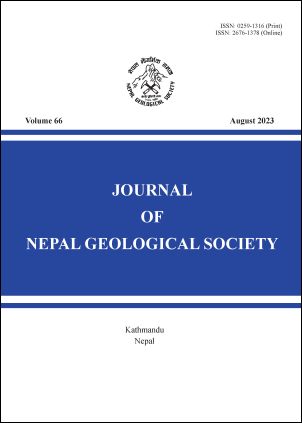Facies association and Paleo depositional environment of the exposed Neogene succession in the Sitapahar Anticline of Rangamati Area, Chittagong Tripura Folded Belt (CTFB) region, Bengal Basin, Bangladesh
DOI:
https://doi.org/10.3126/jngs.v66i01.57924Keywords:
Facies association, paleo-depositional environment, facies analysisAbstract
Neogene sedimentary rocks are exposed in the Chittagong Tripura Folded Belt (CTFB) Region in Bengal Basin. Sitapahar anticline is situated in the middle part of the CTFB Region. In this structure, eleven litho-facies have been identified in fluvial, overbank, shallow marine, deltaic, and deep marine depositional environments. Surma Group is composed of Bhuban and Boka Bil formation during Miocene time and was deposited in shallow marine, deltaic, and deep marine environments and characterized by the identification of interbedded shale facies (ShI), fine sandstone facies (SFs), lenticular laminated silty shale to shale facies (Zw), wavy bedded sandstone siltstone facies (Slsh), flaserbedded sandstone siltstone facies (Sxhs), ripple laminated sandstone facies (Sr), black Shale facies (Shb) and nodular shale facies (Zn). While, Pliocene Tipam group and Plio-Pleistocene Dupi Tila Formations were deposited in fluvial intervention and characterized by crossbedded sandstone facies (Sxbt), mudstone facies (Mf), interbedded mudstone and sandstone facies (MI).
Downloads
Downloads
Published
How to Cite
Issue
Section
License
© Nepal Geological Society




